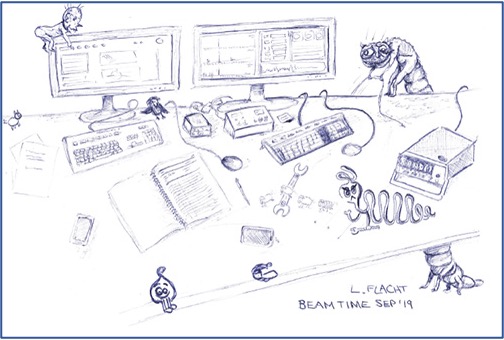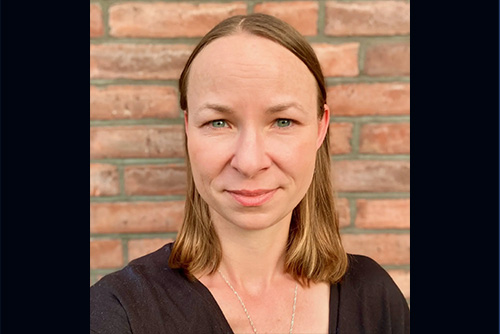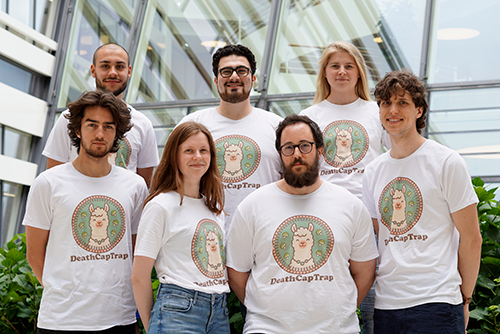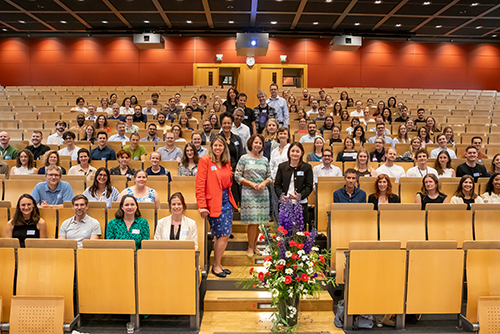CSSB’s contribution to fighting the coronavirus
Scientists around the world are responding to the coronavirus pandemic with exceptional speed and ingenuity. Using the cutting-edge technologies available at CSSB, our scientists are using their expertise to contribute to the investigation of SARS-CoV-2. In addition to the projects listed below, all CSSB core facilities and the multi-user cryo-EM are currently providing services for SARS-CoV-2 related research projects.
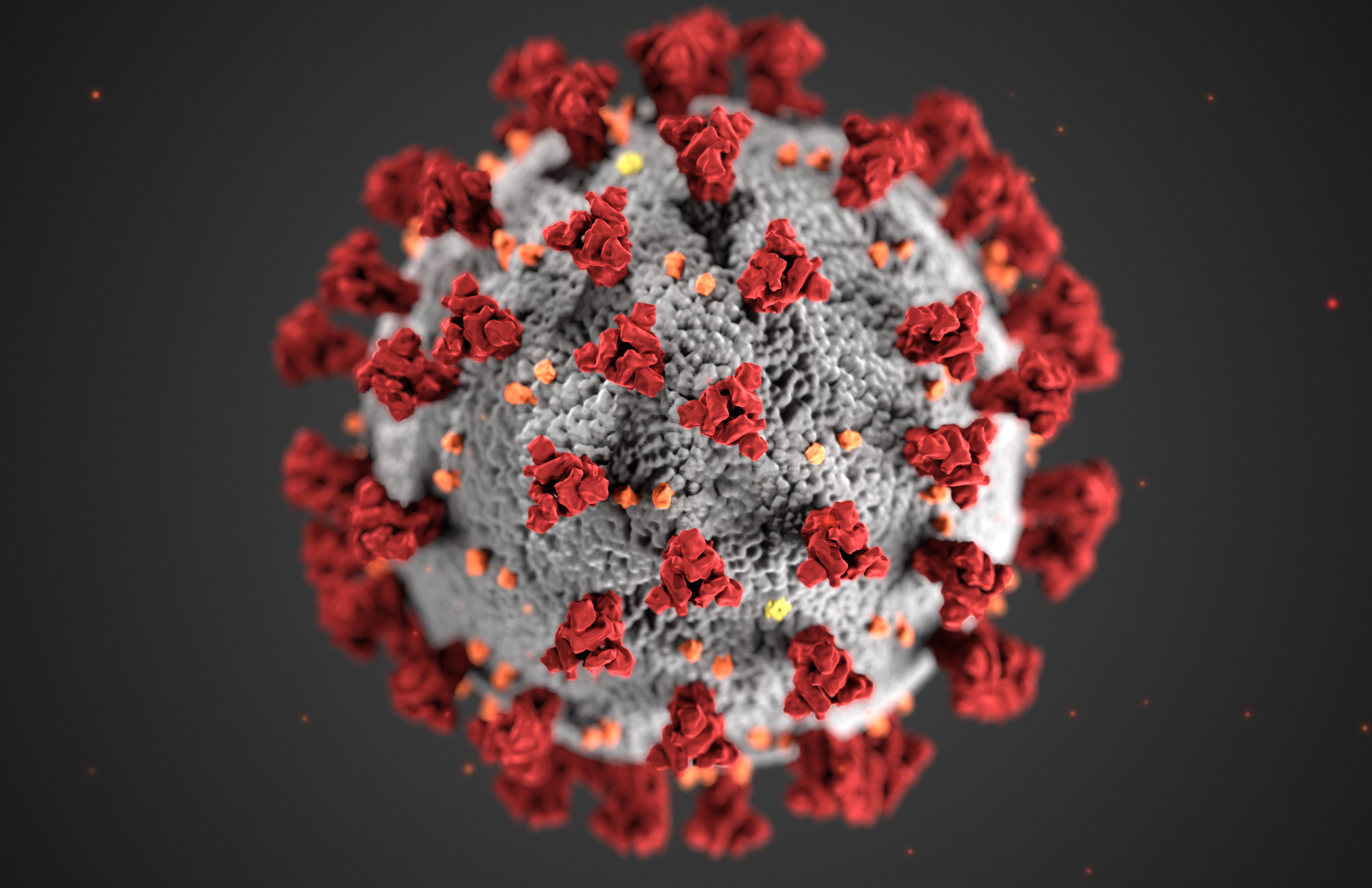
Here's a list of our ongoing projects:
Selection of neutralizing nanobodies against the receptor binding domain of SARS-CoV-2
Neutralizing antibodies/ nanobodies not only bind to the virus but also block infection. Using a large library of synthetic nanobodies, the Loew group aims to generate a binding protein against the receptor binding domain of SARS-CoV-2 which is known to interact with the ACE2 receptor on human host cells. Once nanobodies binding to the piece of the SARS-CoV-2 protein, have been identified, the Haelleberg group will conduct cryo-EM analysis to find out how well these nanobodies prevent coronavirus from entering cells.
CSSB Group Leaders: Christian Loew, EMBL; Martin Haelleberg, KI
For more information: https://www.embl.org/news/science/exploring-synthetic-antibodies/
Cellular electron cryo tomography of coronavirus assembly
Our collaborating group at the Leiden University Medical Centre (LUMC) has a long-standing interest in the structural investigation of coronaviruses and their intracellular assembly pathways. Jointly, we apply electron cryo tomography to virus infected cells to understand critical but hitherto less understood steps in coronavirus assembly at the molecular level. Such mechanistic insights are key to identify new target structures for antiviral interventions.
CSSB Group Leader: Kay Grünewald (HPI/UHH)
Collaborators: Montserrat Barcena (LUMC, Leiden, NL)
Structural investigations of antibody binding sites on the coronavirus spike protein
Patient serum derived antibodies binding to the SARS-CoV-2 coronavirus spike protein is currently characterized by the group of Thomas Krey (University of Lübeck). Next, we will structurally analyze various antibody-spike protein complexes by single particle electron cryo-microscopy at CSSB. Mapping these binding sites and comparing our results to findings of similar ongoing studies will provide insights on the relative frequency and strength of binding to specific spike protein surface epitopes.
CSSB Group Leader: Kay Grünewald (HPI/UHH)
CSSB Associate Member: Thomas Krey (University of Lübeck)
Collaborator: Thomas Winkler (University of Erlangen)
Multiscale 3D imaging of SARS-CoV-2 live cycle throughout different stages of infection
Following the process of coronavirus infection in 3D from the cellular to the multicellular level is a next level of complexity that is currently rather under-explored. In correlation with fluorescence microscopy information, 3D electron microscopy techniques are now capable of reconstructing very large volumes and hence allow to close this gap. Having access to these techniques developed with the HPI technology platform ‘Microscopy and Image Analysis‘ (Rudolph Reimer) and joining forces with SARS-CoV-2 researchers at HPI and complementary expertise in organoid culture and immunological aspects (likewise at HPI), we are in a unique position to map in 3D the complete SARS-CoV-2 life cycle in a multicellular infection model.
CSSB Group Leaders: Jens Bosse (MHH) and Kay Grünewald (HPI/UHH)
Collaborators: Guelsah Gabriel/ Stephanie Stanelle-Bertram (HPI), Markus Altfeld (HPI), Thomas Dobner (HPI)
Structural analysis of SARS-Cov2 proteins
Viral translation products exhibit typically no functional redundancy which makes any encoded protein a target for intervention aiming for either prevention of infection or reduced viability.
We collaborate with external partners in the preparation of corona protein samples for crystallographic analysis targeting subsequent druggability.
CSSB Group Leader: Jörg Labahn (FZJ)
X-ray based screen of drugs against SARS-CoV-2
The project aims at performing high-throughput X-ray crystallographic screening experiments of several thousand compounds in complex with protein targets at the PETRA III synchrotron, to identify potential drug candidates, which will be subsequently tested in protein activity assays and finally virus cell cultures. The PC and HTX facilities will be used o further characterize drug/target complexes biophysically. CSSB PC and HTX facilities: Maria Garcia Alai
Scientific Leadership: Alke Meents (DESY)
Crystallization of two protein complexes from coronavirus
Charlotte Uetrecht’s group is studying how the non-structural proteins of SARS-CoV-2 assemble to form the replication complex building on previous work on SARS-CoV (1). The PC and HTX facilities will be used for crystallization and further characterization of the proteins.
CSSB PC and HTX facilities: Maria Garcia Alai
Scientific Leadership: Charlotte Uetrecht (HPI).
SARS-CoV-2 RNA polymerase inhibitors
As with other viral infections, the key enzymes of the viral replication are attractive targets to block virus reproduction. SARS-CoV-2 is an RNA-dependent RNA-polymerase that will be addressed by chemically modifying nucleoside analogue triphosphate. Mechanisms of inhibition and structural requirements will be studied e.g. by cryo-EM and X-ray crystallography.
CSSB Scientific Director: Chris Meier, UHH
Collaborators: Ralf Bartenschlager, Heidelberg; Bruno Canard, Marseille
Inhibition of cellular targets involved in the pyrimidine biosynthesis pathway
For the viral replication high amounts of RNA-nucleoside triphosphates are required. These can be produced by the cellular salvage or the de-novo-pathways. We are aiming for potential small molecule inhibitors that reduce the amount of the pyrimidine nucleoside triphosphates by inhibition of a cellular enzyme involved in the de-novo-pathway and thereby block viral replication. A suitable enzyme has been identified. New small molecules inhibitors will be made and tested. Moreover, structural biology will be done to understand the mechanism of action.
CSSB Scientific Director: Chris Meier, UHH
Collaborators: EU consortium CARE, H2020
SARS-CoV-2 nsp 3 inhibition by membrane permeable ADPR-analogues
The project aims to modify the functional properties of the non-structural protein nsp3 of the SARS-CoV-2 which is responsible for the removal of adenosine diphosphate-ribose (ADPR) from mono- or poly-ADP-ribosylated proteins (deMARylation/dePARylation enzyme activity). The function of this enzyme seems to be involved in the induction of the cytokine storm observed in severe cases of COVID-19. By inhibition of this enzymatic function it is aimed to prevent this fatal immunologic event.
CSSB Scientific Director: Chris Meier, UHH
Collaborators: Ralf Fliegert and Susanne Pfefferle, UKE, SFB 1328
